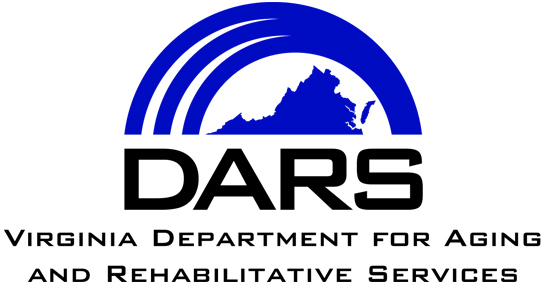Chapter 10 Contents:
[REVISED: 4/23/18] - Definition.
Direct placement means the case record indicates DRS staff provided job placement services and the counselor communicated with the employer before the client entered employment.
- Timing.
When the client becomes employed consistent with the established employment goal, DRS staff enters the Employed start date in AWARE. However, the 90 day time period for employment begins when stability is entered in AWARE
a. For non- SE cases, except JCTS and OJT, stability and start dates should be entered at the same time. This will move the case to "employed status"
and the clock for closure starts ticking.
i. For Job Coach Training Services (JCTS) cases, the employment start date is entered when the individual starts employment. This does not move the case to Employed. The case will be in Service E. When the individual is no longer receiving JCTS and is stable in employment, enter the stability date -then the case moves to Employed and the clock for closure begins ticking.
ii. For on-the-job training (OJT), see the Additional Eligibility Criteria for On-the-Job Training Services in Chapter 8.19, TRAINING, Policy 1
for when to move the case into Employed status.
b. For supported employment (SE) the employment start date is entered when the consumer starts employment. This does not move the case to
employed. The case will be in Service E. When the consumer has reached stability - enter the stability date - then the case
moves to Employed and the 90 day closure clock will start ticking. Do no enter a stable date until the consumer is stable in employment.
This includes the case of a student with a disability who is enrolled in secondary (junior and senior high) school. c. Clients in correctional institutions, including those in Work Release, are not considered employed until released from the supervision of the institution.
3. Informed Choice.
If the client wishes to accept or remain in an employment outcome that the counselor does not agree is satisfactory, the counselor shall document the concerns
discussed with the client in order for the client to make an informed decision.
Guidance 1: Factors to consider when determining if the placement is satisfactory are (per 2001
Federal Regulation 34 CFR § 361.46): client strengths, resources, priorities, concerns, abilities, capabilities, career interests, and informed choice . For example, employment and working conditions will not aggravate client disability or jeopardize the health or safety of the client or others.
Guidance 2: Factors to consider when assessing employment performance may include, but are not limited to: occupational skills, work attitudes, work habits, work tolerance, social and behavior patterns in the job environment, quality and quantity of work products suitable for successful job performance.
Back to Chapter Index
[REVISED: 9/15/22] - Job placement does not mean the counselor’s contact with the VR client ceases. The counselor shall maintain contact with the VR client and provide necessary services until case closure (per 2001
Federal Regulation 34 CFR § 361.56). The purpose of the contact is to determine if the VR client and counselor agree that the placement is satisfactory and that the individual is performing well on the job.
- For VR clients in supported employment, a primary counselor responsibility upon job stabilization is to ensure that the ongoing support funding agency is aware of the pending discontinuation of VR time-limited services.
- Post-employment services (PES) may be provided during Employed status, subsequent to the achievement of an employment outcome but before case closure, to maintain, regain, or advance in employment. (Per RSA FAQ-22-03 issued March 11, 2022) See additional criteria for PES in Chapter 8.22 Post-Employment Services.
Guidance 1: If the VR client entered employment without the counselor having prior contact with the employer, the counselor and consumer should consider what contact, if any, the counselor should make with the employer.
Guidance 2: Consumer locator assistance. Consumer locator assistance is available from the Virginia Employment Commission (VEC). (The Unemployment Compensation Act requires Virginia employers to provide the VEC with wage information on each employee.) Under an agreement between DRS and VEC the DRS counselor sends the VEC Coordinator a memo with the statement “Information regarding name and address of employer and the employee’s earnings is requested from VEC to assist me in locating (consumer’s name and social security number).” The VEC response will reflect work activity three to six months before the date of the request.
Back to Chapter Index
[REVISED: 7/1/12] For minimum time period the VR case must remain in Employed status, see Chapter 11, CLOSURE, Policy 1.
[REVISED: 7/1/12] The counselor shall document all contacts with the client and all services provided in Employed status. If the counselor is not able to maintain contact with the VR client following job placement, the counselor must document in the case record the reason(s) and attempts.
[REVISED: 1/21/99] The counselor may be responsible for determining whether an exemption from the minimum wage requirement for competitive employment should be secured. Contact the Richmond Office of the United States Department of Labor to request required forms and exemption criteria.
[REVISED: 4/9/18] Once the VR client is employed consistent with the employment goal in the Employment Plan, DRS staff will enter the employed start date and the case will move into Service Employed status (Service E). From Service Employed status, the counselor will move the case to Employed status by entering the stable date (for instructions on completing the screen, see AWARE manual). From Employed status, the counselor will move the case into Closed – Rehab status or Closed – Other status.
Back to Chapter Index
Links to the Code of Federal Regulations (CFR) are currently unavailable while we await federal changes to the vocational rehabilitation program. Upon promulgation of the final regulations the links will be updated and activated.
|

